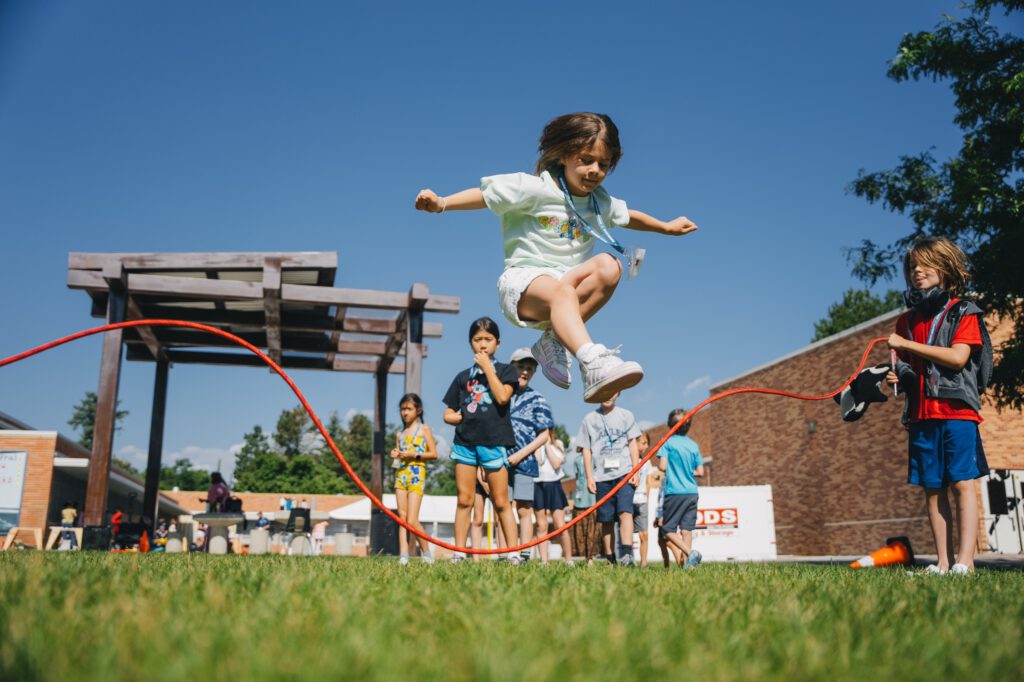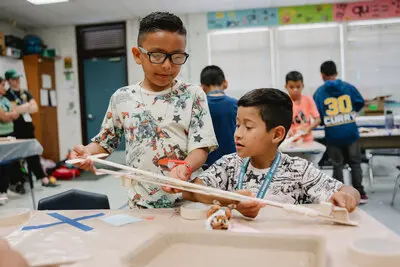The United States has long been associated with innovation and ingenuity—think about the space program and the advent of personal computers! But as American students began to lag behind some of their international counterparts on science and math tests, there was a growing concern about maintaining a competitive edge. In an effort to sustain our global leadership in science and technology and prepare kids for careers of the future, educators envisioned an alternative to traditional curriculum where science, math, engineering and technology would be taught through an interdisciplinary approach applied to real-world problems. The SMET curriculum gained limited traction until the National Science Foundation rearranged the acronym in 2001. Suddenly, STEM education was everywhere.
While no one would suggest that kids won’t need science and technical skills, or that careers of the future will not be heavily STEM-focused, an argument has recently been made for the inclusion of the arts in this multidisciplinary approach. Though some would contend that art is already there, embedded in engineering design or in the communication, the intentional emphasis on art adds an important enhancement that ensures both sides of the brain are activated. STEAM project based learning provides a well-rounded adventure that makes learning deeply engaging and kid-friendly. It places kids in the driver’s seat, letting them guide their learning and play an authentic role in their own education.
STEAM Disciplines Explained
There is no question that STEAM makes education more inclusive by offering an entry point for everyone. Each of the disciplines individually has a unique and challenging focus; together, they form a powerful approach to learning.
- Science encompasses the study of life, physical forces and the Earth and its solar system. Through the study of science, kids learn more profoundly about themselves and their place in the world.
- Technology is present in every aspect of our lives, from simple machines like a doorknob (wheel and axle) or a ramp (inclined plane) to the complex computers in our pocket (cell phones). It will play an even bigger role in our future as technology becomes more and more integrated into our everyday lives.
- Engineering involves the application of technology to solving problems, from civil engineers who design infrastructure to systems engineers who standardize processes to mechanical engineers who design and build tools and machines—just to name a few.
- Arts refers to a wide array of creative disciplines such as visual, performing, architectural, language, etc. The emphasis is on imaginative, open-ended expression that gets us in touch with our senses.
- Math includes number concepts and algebraic thinking, measurement and geometry, probability and statistics. It is used throughout the day in cooking, money transactions and in a variety of careers.
Allowing Kids to Take the Wheel
The marriage of STEAM and project based learning celebrates ingenuity and innovation. Project based learning has the best elements of make-believe: imagining a scenario with a problem or challenge, using real tools and equipment to create a solution and then demonstrating or presenting it to an audience. It is kid-centered and often allows for some self-guided exploration.
Not only does STEAM project based learning tap into kids’ curiosity and creativity through developmentally appropriate activities, it also prepares them for the world of work and research via authentic projects. Kids have the opportunity to not just see themselves in creative roles, but to live those roles through the experience.
Imagine being a biomedical engineer who must design and create a lighter, more practical prosthetic hand. Think about the draw of a road trip adventure in which kids experiment with fuel sources and design eye-catching roadside signs. Picture the opportunity to create and code their own video game, designing the environment and devising the rules. Get involved in crime scene investigation, solving a mystery by piecing together the clues.
The Road to Success
To equip kids with the skills they will need to steer themselves into a bright and promising future, they must be empowered with flexibility and the 4 Cs—creativity, critical thinking, collaboration and communication. The Partnership for 21st Century Skills has identified these as the learning and innovation skills that separate kids “who are prepared for increasingly more complex life and work environments” from those who are not. These skills will be invaluable as they move through high school, college and into careers. A summer camp program like Galileo, built on STEAM project based learning, will put them on that road to success.
Explore STEAM learning at Galileo summer Camps in San Francisco, Southern California, Chicagoland, Denver and Seattle. Experience our Bay Area programs, such as Palo Alto summer camps, or find the location nearest you in Washington, Chicagoland, or Southern California. Enroll now for fun and skills that last. Stay updated on camp happenings and resources by joining our mailing list. Contact us for summer camp details. Don’t miss out on this unforgettable opportunity!





